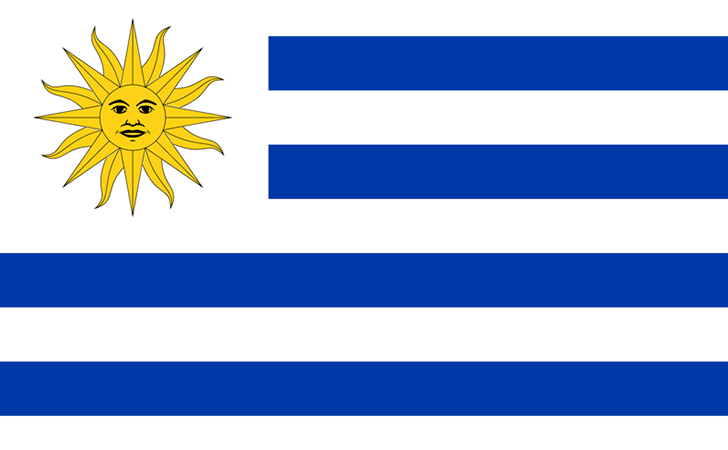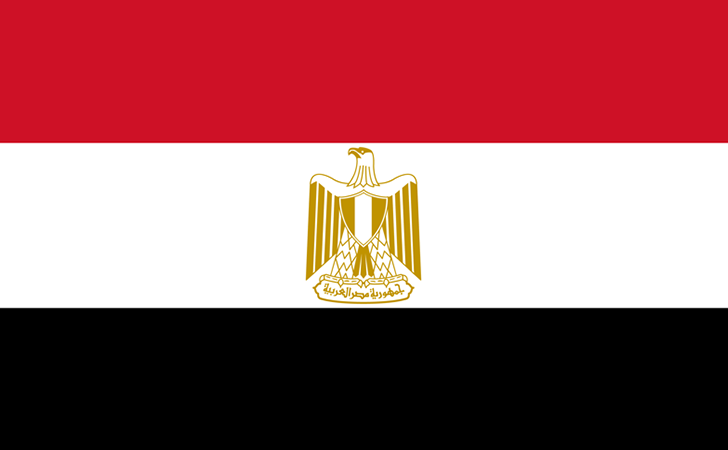


The flag of Latvia was formally re-adopted on February 27, 1990, after the Soviet Union banned its use from 1940 until 1990.
The white stripe's roots come from a legend in which a wounded Latvian leader had wrapped a white sheet around his body.
As the legend goes, at the next battle, this sheet was used as the Latvian flag.The exact hues and extents of the Latvian flag were set on November 18, 1918, when Latvia became an independent country.
The flag was formally adopted without precedent for 1922 and was used until 1940 when the Soviet Union gained control of Latvia.
The Latvian level is flown on several days during the year including: Lithuanian Independence Day (February 16), Estonian Independence Day (February 24), Constitution Day/Labor Day (May 1), Renewal of Independence Day (May 4, 1990), Lacplesis Day (November 11), and Independence Day (November 18, 1918).
The flag is additionally flown at half-pole in grieving on the next days: in memory of casualties of socialist genocide (Marcy 25, June 14, and the main Sunday in December), the beginning of the Soviet Union's control of Latvia (June 17), and in memory of the Holocaust casualties (July 4).Latvia additionally uses four other authority flags: the Presidential Standard, the Standard of the Prime Minister, the Standard of the Speaker of the Saeima, and the Standard of the Minister of Defense.

The Egyptian flag is made of three horizontal equal bands of red, white, and black, and there is the Egyptian eagle of Saladin in the center of the white band.
Egypt's flag was officially adopted on October 4, 1984 as the civil and state flag.
Three are three colored bands that are designed to represent the Egyptian Revolution, the bloodless nature of the Revolution and the end of the oppression of Egyptians.
The flag also features the national emblem, or the Egyptian eagle of Saladin, in the center.
Colors of the Flag The main colors of the Egyptian flag are red, white and black.
The flag also features the gold outline of the Falcon of Saladin, the national emblem.


The flag of Latvia was formally re-adopted on February 27, 1990, after the Soviet Union banned its use from 1940 until 1990.
The white stripe's roots come from a legend in which a wounded Latvian leader had wrapped a white sheet around his body.
As the legend goes, at the next battle, this sheet was used as the Latvian flag.The exact hues and extents of the Latvian flag were set on November 18, 1918, when Latvia became an independent country.
The flag was formally adopted without precedent for 1922 and was used until 1940 when the Soviet Union gained control of Latvia.
The Latvian level is flown on several days during the year including: Lithuanian Independence Day (February 16), Estonian Independence Day (February 24), Constitution Day/Labor Day (May 1), Renewal of Independence Day (May 4, 1990), Lacplesis Day (November 11), and Independence Day (November 18, 1918).
The flag is additionally flown at half-pole in grieving on the next days: in memory of casualties of socialist genocide (Marcy 25, June 14, and the main Sunday in December), the beginning of the Soviet Union's control of Latvia (June 17), and in memory of the Holocaust casualties (July 4).Latvia additionally uses four other authority flags: the Presidential Standard, the Standard of the Prime Minister, the Standard of the Speaker of the Saeima, and the Standard of the Minister of Defense.


The Egyptian flag is made of three horizontal equal bands of red, white, and black, and there is the Egyptian eagle of Saladin in the center of the white band.
Egypt's flag was officially adopted on October 4, 1984 as the civil and state flag.
Three are three colored bands that are designed to represent the Egyptian Revolution, the bloodless nature of the Revolution and the end of the oppression of Egyptians.
The flag also features the national emblem, or the Egyptian eagle of Saladin, in the center.
Colors of the Flag The main colors of the Egyptian flag are red, white and black.
The flag also features the gold outline of the Falcon of Saladin, the national emblem.

